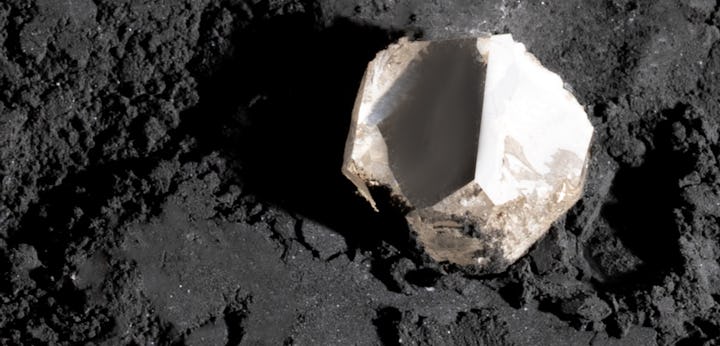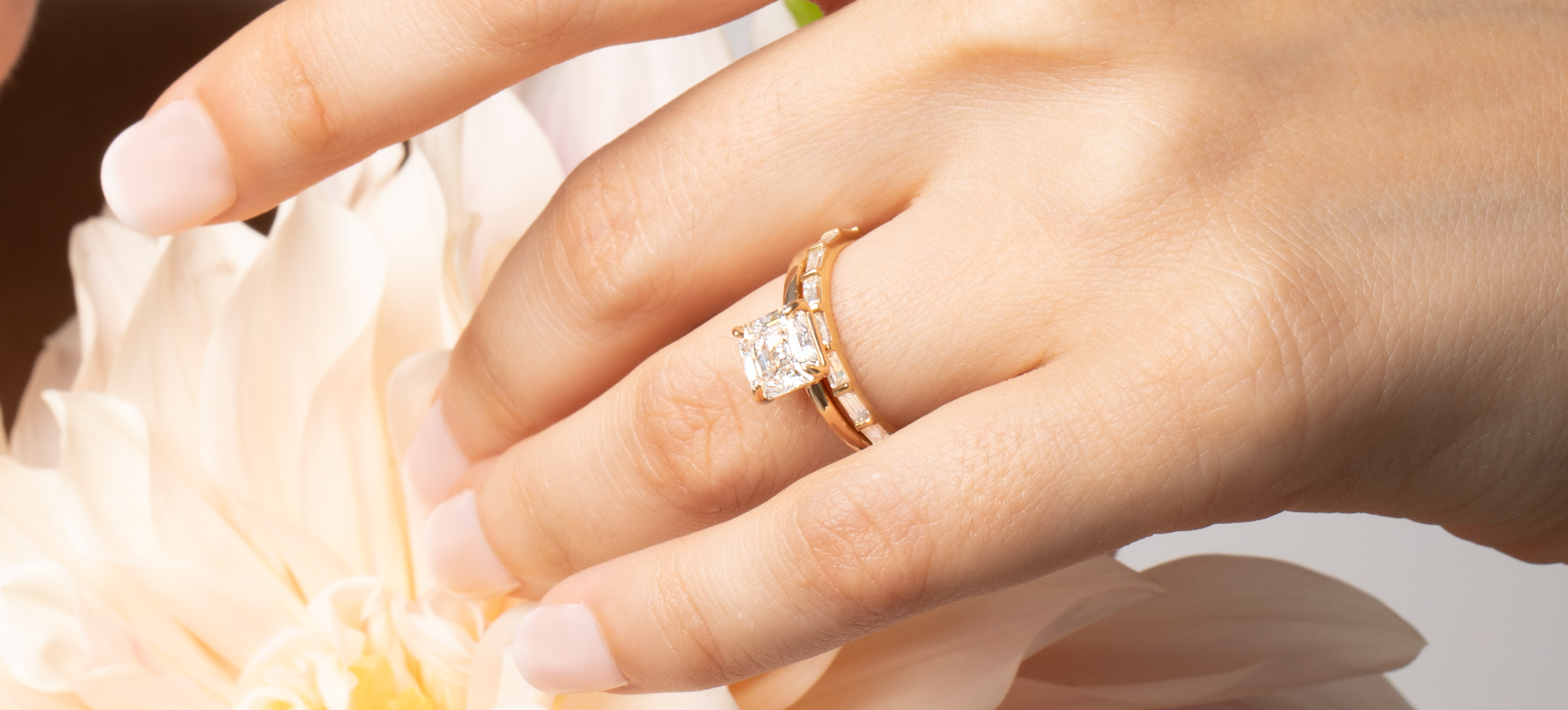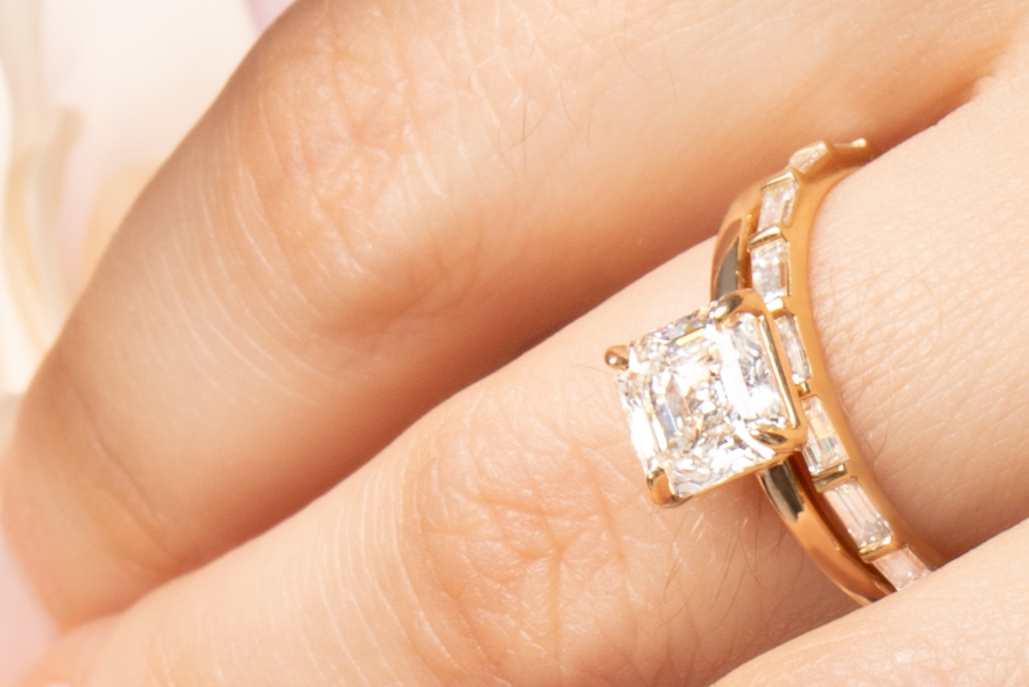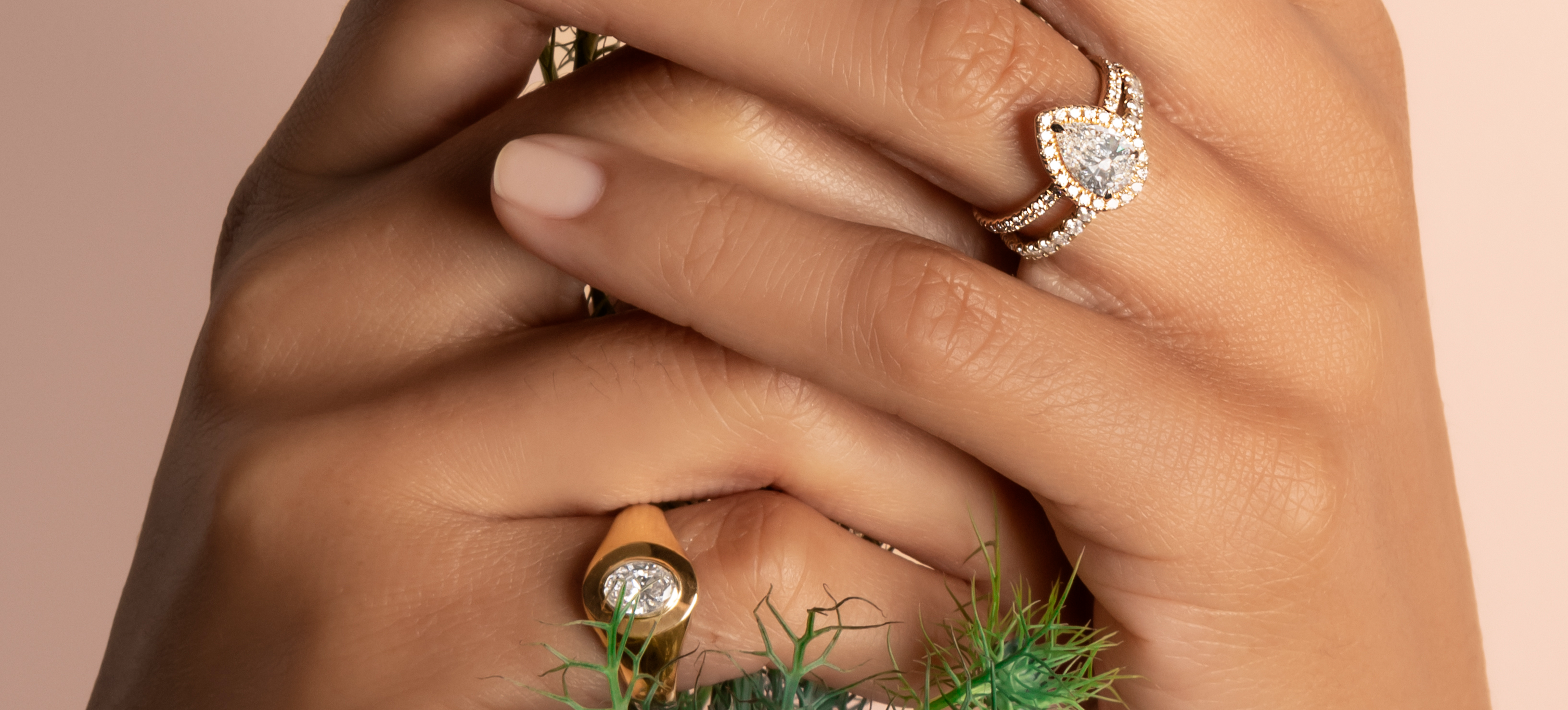

Moissanite vs Lab-grown diamond
Alicia Briggs | September 08, 2023
Lab-grown diamonds and moissanite are not the same. It’s important to know their differences. Conscientious consumers have many mined-diamond alternatives to choose from today. Confusing moissanite and other diamond simulants with lab-grown diamonds isn’t uncommon. Those looking for sustainable, ethical, or affordable alternatives must be careful while doing their research. Read on to discover the difference between moissanite vs. lab-grown diamonds and discover why VRAI created diamonds stand apart.


What is a moissanite diamond?
In the late 1800s, a scientist named Henri Moissan discovered mineral moissanite while studying rock samples from a meteor crater located in Canyon Diablo, Arizona. Moissan was convinced that he had discovered diamonds, due to the stones’ shiny appearance. In 1904, however, after years of close examination, he realized that the crystals he had found did not have the same chemical composition of diamonds — they were made from silicon carbide. Little did he know that scientists had already found a way to create artificial silicon carbide in laboratories just two years before. The mineral form he had found, however, was named Moissanite in his honor.
Is moissanite diamond real?
A moissanite “diamond” is not a diamond at all. Moissanite is a naturally occurring crystal made from silicon carbide that is used as an inexpensive alternative in jewelry and engagement rings. Simply put — moissanite diamonds are fake diamonds.
Natural moissanite — which was originally created by a meteorite that hit the earth and formed a crater — is incredibly rare. So most moissanite on the market is man-made.
Does moissanite test as diamond?
No, moissanite does not test as a diamond. It has an entirely different chemical composition. It is also less durable than diamonds, but sturdy enough for everyday jewelry.
Moissanite is also graded differently. Both mined and lab-grown diamonds ( real diamonds with different points of origin) are graded by the 4Cs — cut, color, clarity, and carat weight. Moissanite is only graded on color. When consumers buy moissanite, they choose from Premium (G-H on the color scale) or Super Premium (D-F).
The clarity of moissanite is essentially perfect for each stone. Lab-grown and mined diamonds, however, feature inclusions. They must be graded on clarity, as well as cut and carat weight. These factors further underline the difference between moissanite and diamonds.


What’s the difference between moissanite and lab-grown diamond
Lab-grown diamonds, just like mined diamonds, are made from carbon. Moissanite is made from silicon carbide. To the untrained eye, moissanite looks like diamond — so much so that some consumers choose moissanite jewelry and engagement rings for budgetary reasons. But the chemical composition and the value of moissanite is inferior to lab-grown diamonds. Lab-grown diamonds are real diamonds, made of the same material and graded on the same scale as mined diamonds. Moissanite is a diamond simulant that is graded differently and of lesser value.
Consumers who choose moissanite jewelry often feel good that their gemstone didn’t require mining. But unless moissanite makers are using renewable energy to power their plants and laboratories, they are creating significant carbon emissions and likely relying on non-renewable coal. So moissanite can hardly be called a sustainable diamond alternative.
VRAI created diamonds, although man-made, are sustainably created in our zero-emission, hydropowered foundry. We are the world’s first diamond producer certified carbon neutral. We are proud to be a truly sustainable alternative to mined diamonds.
Moissanite vs diamond “sparkle”
What some might call a gemstone’s “sparkle” is actually better described as fire, brilliance, and scintillation. Normally, moissanite will have more fire and brilliance than a diamond or most other gems. This means that it appears to have more sparkle than a diamond. Moissanite is double refractive and is also cut differently to highlight its overall sparkle. But the extra brilliance does not mean it is as durable or valuable as a diamond.
Moissanite vs diamond price
Moissanite is one of the most affordable simulant diamonds on the market today. It costs a tenth of what a mined diamond costs. The price of moissanite is based on its size and the difference between Premium and Super Premium color grading.
Lab-grown VRAI created diamonds are also less expensive than mined diamonds, but this is not due to a difference in quality. This is because we are a vertically integrated company — we create our diamonds ourselves in our zero-emission foundry. No mining companies, cartels, or other middlemen are paid in order for us to receive our diamonds. This means that VRAI created diamonds are available at a more accessible price to consumers.
Simulated diamond vs moissanite
Lab-grown diamonds are sometimes incorrectly referred to as synthetic or simulated diamonds, but lab-grown and simulated diamonds are not the same. Lab-grown diamonds are real diamonds, made from carbon, above ground in a laboratory. Synthetic diamonds, like moissanite, are made from synthetic materials. If a man-made diamond is similar to a plant grown in a greenhouse instead of outside, then a synthetic diamond would be similar to a fake plant sold in a store.
Moissanite vs diamond vs cubic zirconia
The most common diamond simulant besides moissanite is cubic zirconia. Cubic zirconia has grown in popularity over the years due to its affordability — it is much less expensive than mined or lab-grown diamonds. But part of this is because, like moissanite, cubic zirconia is not diamond at all. It’s a crystalline form of zirconium dioxide. Zirconium oxide powder is exposed to extremely high temperatures until it melts. Then it is left to cool, and that is when crystals begin to form. The end result is a gemstone similar in appearance to diamonds that can be used for jewelry making. Like moissanite, cubic zirconia and any other gem claiming to be a synthetic diamond, cannot be considered entirely ethical or environmentally-friendly. The short-term solutions they offer are often outweighed by the long-term effects of their carbon emissions
Discover lab-grown VRAI created diamonds
Speak virtually or in-person with our diamond experts to discover the beauty and innovation of VRAI created diamonds for yourself.